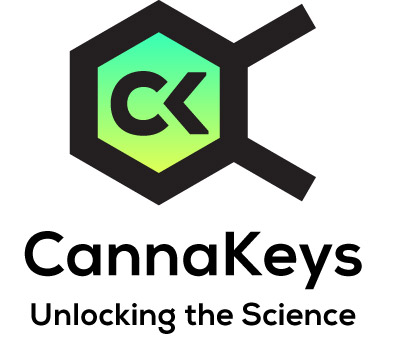Myrcene Research Dashboard
What am I missing as a non-subscriber?
To see a full dashboard with study details and filtering, go to our DEMO page.
As a subscriber, you will be able to access dashboard insights including chemotype overviews and dosing summaries for medical conditions and organ system and receptor breakdowns for cannabinoid and terpene searches. Study lists present important guidance including dosing and chemotype information with the ability to drill down to the published material. And all outputs are fully filterable, to help find just the information you need. Stay up-to-date with the science of cannabis and the endocannabinoid system with CannaKeys.
CannaKeys has 56 studies associated with Myrcene.
Here is a small sampling of Myrcene studies by title:
- The Effects of β-myrcene on Simulated Driving and Divided Attention: A Double-Blind, Placebo-Controlled, Crossover Pilot Study
- Terpenes and terpenoids as main bioactive compounds of essential oils, their roles in human health and potential application as natural food preservatives
- Cannabis sativa Extract Induces Apoptosis in Human Pancreatic 3D Cancer Models: Importance of Major Antioxidant Molecules Present Therein
- The chemical composition of ethanolic extracts from six genotypes of medical cannabis (Cannabis sativa L.) and their selective cytotoxic activity
- Anti-Inflammatory and Analgesic Properties of the Cannabis Terpene Myrcene in Rat Adjuvant Monoarthritis
Components of the Myrcene Research Dashboard
- Top medical conditions associated with Myrcene
- Proven effects in clinical trials for Myrcene
- Receptors associated with Myrcene
- Individual study details for Myrcene
Ready to become a subscriber? Go to our PRICING page.
Page Quick Links
Select New Terpene
Overview - Myrcene
What is Myrcene?
Myrcene is a monoterpene that, in diluted forms, tastes like mango.
Myrcene makes THC more biologically available by increasing the saturation level and speed at CB1 and thus boosting THC’s properties.
Higher concentrations of β-myrcene in cannabis tend to produce feelings of heavy, deep relaxation.
Additionally, potential properties of myrcene include sleep-inducing, analgesia, anti-inflammatory, antioxidant, anxiolytic, anti-Alzheimer’s, protective against peptic ulcers, and may be protective against breast cancer.
Is Myrcene safe?
The isolated terpene is a colorless transparent liquid that is flammable. Solutions with myrcene percentage values above 10% may cause skin, eye, and respiratory irritation, including severe and possibly fatal complications if swallowed.
Scent Description
Berries, herbal, woody, floral, root-vegetable
Natural Sources
Hops, mango, bay leaves, lemongrass
Cannabis Strains High in Myrcene
Pure Kush, Blue Dream, Ace of Spades, Super Bud, Jack Herer
Myrcene Properties and Effects
Myrcene is associated with the following properties and effects:
- Analgesic
- Anti-inflammatory pains (J. McDougall et al., 2022)
- Anti-amyloid (reduced Aβ1-42 aggregation) (R. Kumar et al., 2021)
Anxiolytic, anticonvulsive, sedating, possible sleeping aid, potentiates barbiturate-induced sleep in mice (via glutamatergic and GABAergic receptor activity)
Anti-inflammatory (via prostaglandin E2, reducing cytokine production, and inhibiting NF-κB and MAPK in LPS-stimulated murine macrophages)
Antioxidant and anti-aging.
May play a protective role against UVB-induced human skin photo-aging and oxidation (via increased glutathione along with other antioxidant enzymes such as glutathione peroxidase (GPx) and superoxide dismutase, decreased production of ROS, MMP-1, MMP-3, interleukin-6 (IL-6) and increased transforming growth factor type 1 (TGF-1) and type I procollagen secretions in UVB-irradiated human dermal fibroblasts, downregulated phosphorylation of MAPK-related signaling molecules)
Neuroprotective in cerebral ischemia/reperfusion injury.
Anti-Alzheimer’s agent ameliorated neurobehavioural and neuropathological alteration in mice induced by Aluminum trichloride (AlCl3) and D-galactose.
Myrcene alone and in combination with donepezil may serve as a potential candidate for the treatment of Alzheimer's disease (via enhancing synaptic plasticity and cholinergic activity, as well as reducing oxidative damage, neuroinflammation, Aβ1-42 aggregations, and histopathological damage)
Anti-osteoarthritic may halt or slow down cartilage destruction and osteoarthritis progression (via anti-inflammatory effects and anti-catabolic effects in human chondrocytes)
Analgesia antagonized by naloxone and yohimbine (via possible opioid-mediated and noradrenergic mechanisms and anti-inflammatory effects)
Gastroprotective in peptic ulcer diseases in gastric and duodenal mucosa models of damage induced by ethanol, NSAIDs, stress, Helicobacter pylori, ischemia-reperfusion injury, and cysteamine (via increasing mucosal malondialdehyde level, enhancement of antioxidant enzyme activity, decreased activity of superoxide dismutase (SOD) and increased levels of glutathione peroxidase (GPx), glutathione reductase (GR), and total glutathione in gastric tissue)
Anti-invasive effects on breast cancer cells (via downregulation of NF-κB-mediated MMP-9 expression)
Last reviewed by Dr. Abraham Benavides, M.D., 04-29-2022
Myrcene Receptor Binding
Endocannabinoid System (ECS) and Myrcene:
- CB1 (agonist) (N. Raz et al., 2023)
Endocannabinoidome (eCBome) and Myrcene:
Disclaimer
Information on this site is provided for informational purposes only and is not meant to substitute for the advice provided by your own licensed physician or other medical professional. You
should not use the information contained herein for diagnosing or treating a health problem or disease. If using a product, you should read carefully all product packaging. If you have or suspect that you have a
medical problem, promptly contact your health care provider.
Information on this site is based on scientific studies (human, animal, or in vitro), clinical experience, or traditional usage as cited in each article. The results reported may not necessarily occur in all individuals. For many of the conditions discussed, treatment with prescription or over-the-counter medication is also available. Consult your physician, nutritionally oriented health care practitioner, and/or pharmacist for any health problem and before using any supplements or before making any changes in prescribed medications.

